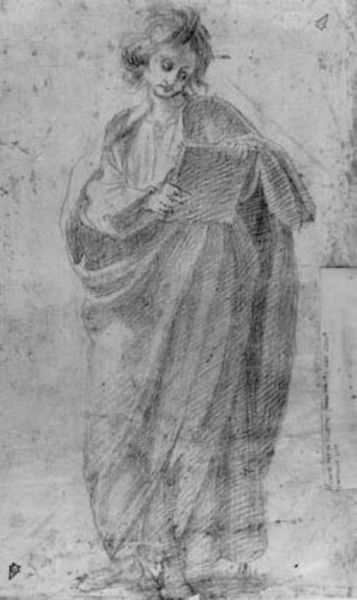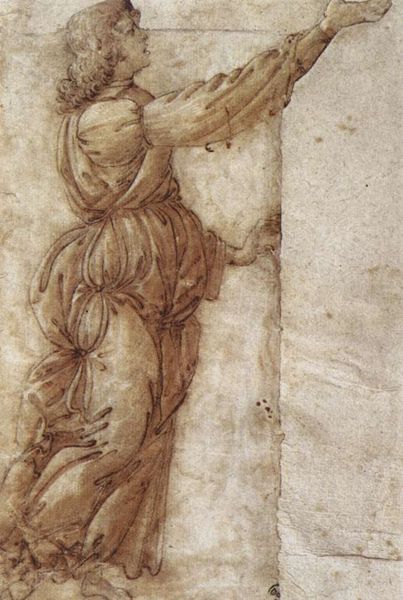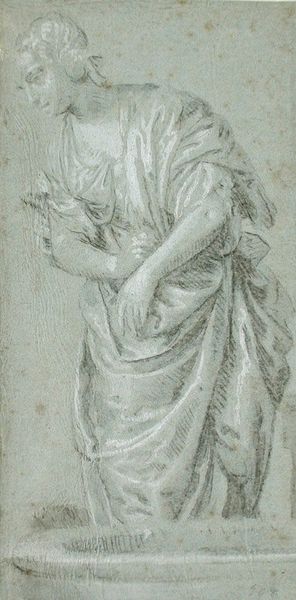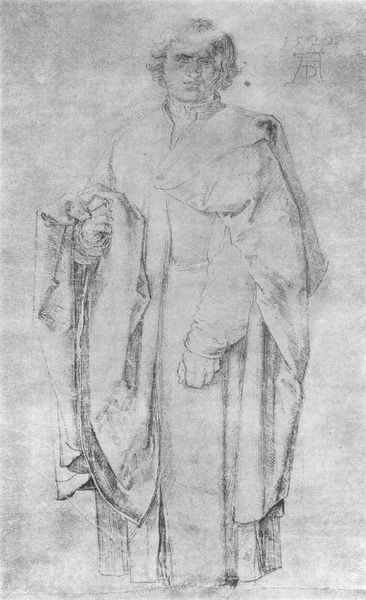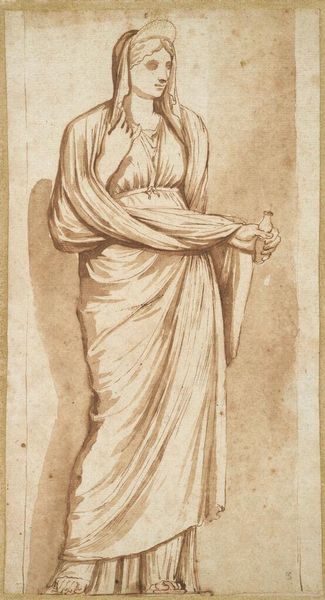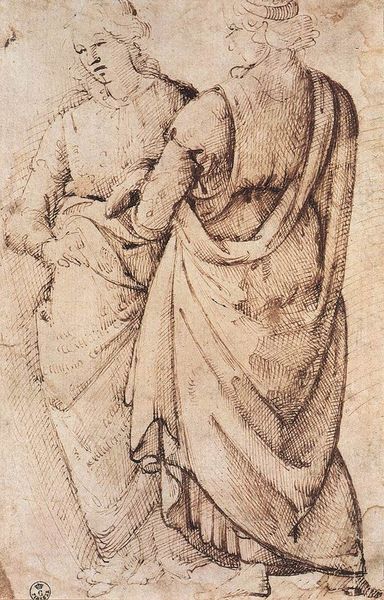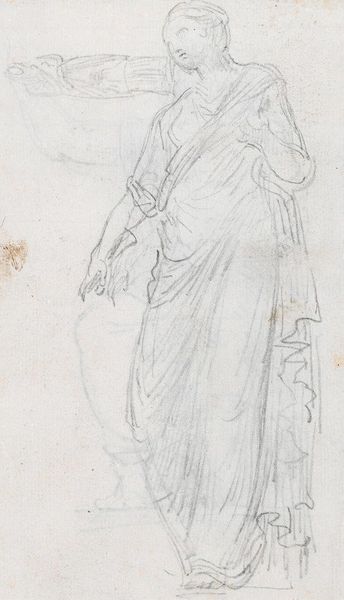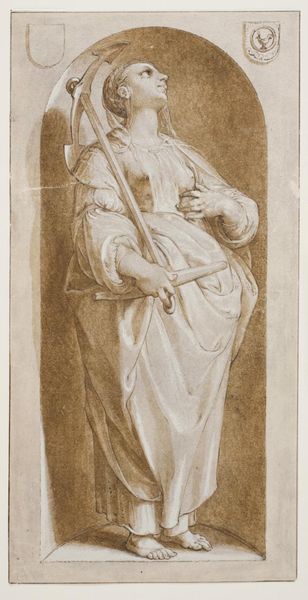
drawing, carving, sculpture, charcoal
#
portrait
#
drawing
#
carving
#
charcoal drawing
#
figuration
#
sculpture
#
charcoal
#
history-painting
#
charcoal
#
italian-renaissance
Copyright: Public domain
Editor: We're looking at "Female Figure," a charcoal drawing from around 1430, attributed to Filippo Lippi. The woman depicted looks quite solemn and thoughtful. What catches my eye is the classical drapery, yet the rendering feels very intimate. What do you see in this piece, from your perspective? Curator: This work invites us to consider the evolving representation of women in the early Renaissance. While seemingly idealized, it's crucial to remember the limited agency afforded to women within that society. Her contemplative gaze, the carefully rendered drapery that both conceals and reveals—are these reflections of actual women, or projections of male desires and societal expectations? Editor: That’s a really interesting point. The control and limitations placed upon women during that era shaped how they were perceived and, subsequently, depicted in art. Does the style of the work relate to how women were presented at the time? Curator: Absolutely. The elegant, almost melancholic beauty was a prevalent trope. Yet, looking closely, do you see any subtle subversions? Is there a strength in her posture, or a quiet resistance in her downturned eyes? We need to question if she embodies the ideal, or critiques it from within. Editor: I hadn't considered it that way. So, it's less about what's literally depicted and more about the social and historical context framing it? Curator: Precisely. How does power manifest itself in this image? Whose gaze are we adopting as viewers, and how does that influence our interpretation of the female figure? It challenges us to engage with art as a mirror reflecting not only aesthetic values but also power dynamics of the time. Editor: This has shifted my perception considerably! I was initially drawn to its simple beauty, but I now appreciate it as a complex intersection of art and social history. Curator: It’s in that intersection where true understanding and appreciation lie, prompting dialogue about representation, identity, and societal forces that continue to shape our world today.
Comments
No comments
Be the first to comment and join the conversation on the ultimate creative platform.
